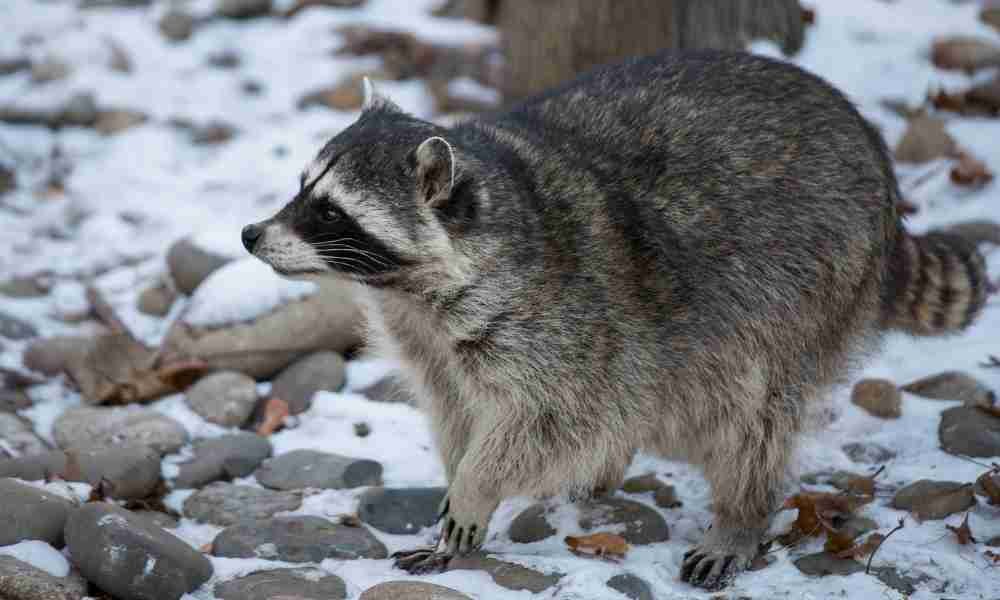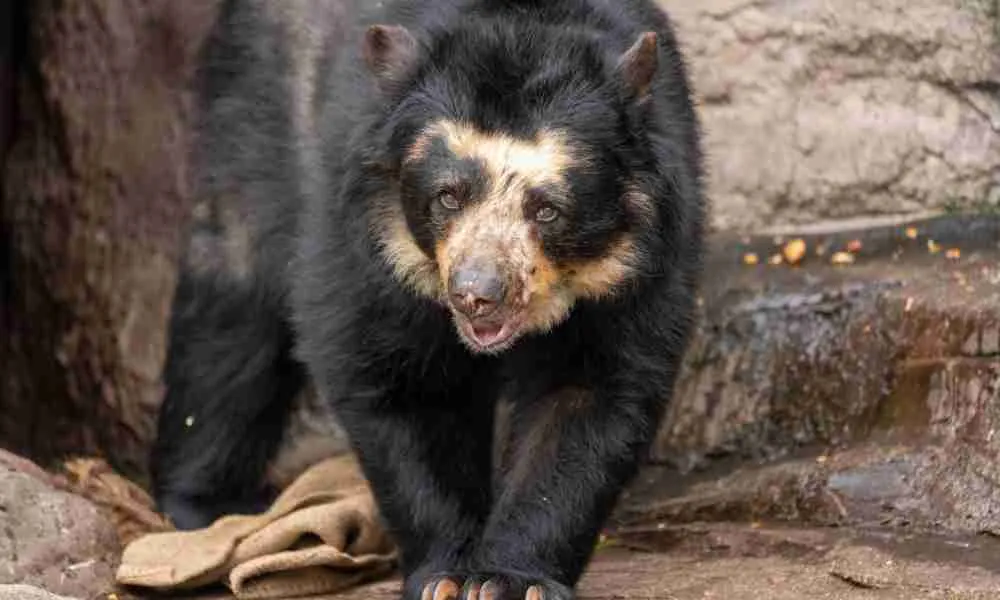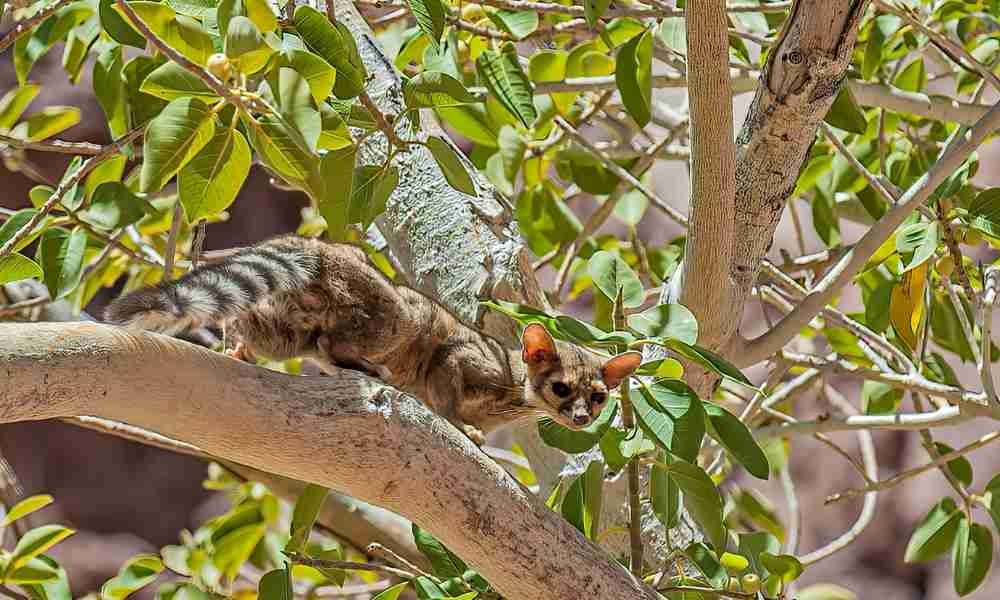For a long time, scientists needed clarification about whether giant pandas are more closely related to raccoons.
And here’s what I found out –
No, giant pandas are not closely related to raccoons. Studies have revealed that giant pandas are more related to bears than raccoons.
On the other hand, red pandas are similar to raccoons.
But then, what are the differences between pandas and raccoons?
Let’s try to find out!
Table of Contents
- Giant Pandas and Raccoons: 4 Key Differences
- Giant Pandas and Racoons: 4 Similarities
- What Are Giant Pandas Closely Related To?
- What are Raccoons Closely Related To?
- Final Thoughts
Giant Pandas and Raccoons: 4 Key Differences
Below are the four significant differences between giant pandas and raccoons.
1. Family
Giant Pandas belong to the Ursidae family. On the other hand, raccoons belong to the Procyonidae family.
Since both animals are mammals, they share some common traits but are very different. According to genetic molecule research, giant pandas qualify as actual bears.
They share their phylogeny or family with the polar bear, brown bear, American black bear, Asian black bear, sun bear, sloth bear, and spectacled bear.
On the other hand, raccoons share their family with ring-tailed cats and cacomistles of the genus Bassariscus.
Quick Side Fact:
Did you know that Giant Pandas are referred to as living fossils?
2. Eating Habits

Giant pandas and raccoons are both carnivores. In other words, they both are from the Carnivora order. However, they prefer different diets to satisfy their needs.
Giant pandas have turned herbivores over time. They prefer bamboo shoots the most. In fact, 90% of their diet consists of bamboo. Additionally, they can eat up to 20 to 30 pounds of bamboo every day.
In contrast, raccoons mostly prefer a meat-based diet. This helps them to conserve their energy through the winters when they are not active.
Their diet consists of both plants and meat. The spring and early summer offer them insects, worms, and other small animals available at that time.
They also prefer fruits and nuts like acorns and walnuts as they help to build up calories.
Raccoons also act as predators of eggs and hatchlings from both birds and reptiles.
3. Physical features
Giant Pandas have one of the most distinct features: “pseudo thumbs”. This feature helps them to hold bamboo better.
The thumb is just like a human thumb but not an actual finger. Their wrist bone is prolonged and shaped like a thumb to help them grab.
Raccoons also have this but are not as modified as the Giant Pandas. They use this thumb-like feature to hold onto their food and other things.
Giant Panda’s wrist bone is enlarged and modified to act like a thumb. But a raccoon’s wrist bone enlargement looks like a smaller version of the panda thumb.
Another distinctive feature is the size of the brain. Giant Pandas are comparatively larger than raccoons, so it’s logical for them to have bigger features.
Giant panda also has a set of strong jaw muscles to chew through bamboo and a digestive system specifically for bamboo.
4. Hibernation

Although both species do not hibernate, there are some differences. Raccoons do not hibernate, but they do store their energy.
This means they can go without food for some days if they preserve their calories. This energy is used during winter when they are less active and too lazy to hunt.
On the other hand, the giant panda does not do this as their diet restricts them. Their diet includes 90% of bamboo.
Moreover, because of their unique digestive system, the bamboo they eat is quickly passed out. For this, they eat a lot of bamboo, but bamboo provides much less energy.
So, in a way, they cannot hibernate like the other bears. The low-nutritious food does not let them hibernate or go without food during colder months.
Now we know that they are different species, do they share common traits too?
Giant Pandas and Racoons: 4 Similarities
Carnivora Group
Giant pandas and raccoons are carnivorous animals meaning they eat meat. Although giant pandas prefer bamboo over meat, they sometimes each tiny insects, fish, and eggs.
In comparison, raccoons are a species that prefer mostly meat. Moreover, both giant pandas and raccoons come from the same Monophyletic order of mammals.
This means that the animals under this group of mammals had a common ancestor and then were divided into other groups.
Behavior
Both giant pandas and raccoons are territorial animals. These animals are lone creatures in the forest. Giant pandas enjoy their alone time snoozing or eating.
These squishy and adorable species come together only when they mate. Raccoons also like to wander in small groups that generally consist of their family.
They do not like it when other raccoon groups invade their territory. Both of these creatures use urine and feces to mark their territory.
Pandas can also use a type of secretion to warn the other pandas or creatures.
Teeth Formation
Because giant pandas and raccoons are carnivorous species, they share almost the same sets of teeth. The surface area for both of these mammals’ teeth sets is identical.
They have sharp canines to help them tear the meat. Pandas use this sharp set of teeth to chew through rough bamboo, while raccoons use it to tear meat.
The extra sharp teeth can also be used to scare away any predators or enemies. The cute pandas and raccoons transform into violent creatures while baring their teeth to their enemies.
Sound Making
Giant pandas share chomping sounds with raccoons. It is a bird-like chirping sound that they make to communicate with others.
Climbing

It isn’t a surprise that these species are great climbers. Giant Pandas climb bamboo trees in order to get the freshest and new leaves.
Raccoons also climb tall trees to hide from predators like foxes, wolves, etc. What’s more, both creatures have hands that help them to climb to such high lengths.
Their hand skeleton is made that way to help them climb. The pseudo-thumbs are a big help in this case.
What Are Giant Pandas Closely Related To?

As mentioned before, giant pandas are closely related to seven different kinds of bears. The giant panda species diverged from the bear species about 15 to 25 million years ago.
They differentiated from the Ursine stock of bears and fell into the Ursidae family of carnivores. Their closest living relatives of ursine stock are the spectacled bears of South America.
They are also closely related to American black bears because of their similar body structures. However, the key difference between bears and pandas is their diet and behavioral attributes.
What are Raccoons Closely Related To?

Their close relatives are the ring-tailed cats and cacomistles. Otters, weasels, and minks are also raccoons’ nearest relatives.
Their family Procyondae also consists of coatis, cacomistles, kinkajous, olingos, and olinguito. These all are omnivorous, meaning they can survive on both a plant-based or a meat-based diet.
Procyonidae was once considered in the bear family but diverged from it. However, studies now show that procyonids are more related to mustelids than bears.
Mustelids are a species who are carnivorous mammals and the largest in the order Carnivora.
Final Thoughts
In this article, we have seen how giant pandas are more closely related to bears than raccoons.
When discovered, giant pandas were considered to be from the same family as raccoons. However, the studies later showed that this is not true.
But there are some truths, too. The giant pandas & raccoons are from the same order as the mammals Carnivora. Both animals are a little territorial and have marking habits.
Giant pandas are not related to raccoons now, even though they may have shared the same ancestors. They are different species having different characteristics and habits.
Nonetheless, both animals are fantastic and unique in their own ways. Their evolution led them to where they are.
Wait, are you also confused between red pandas and lemurs? Read Red Pandas And Lemurs (13 Key Differences & Similarities) to do away with your confusion!
Sources:
Monophyletic Groups | Definition & Examples

